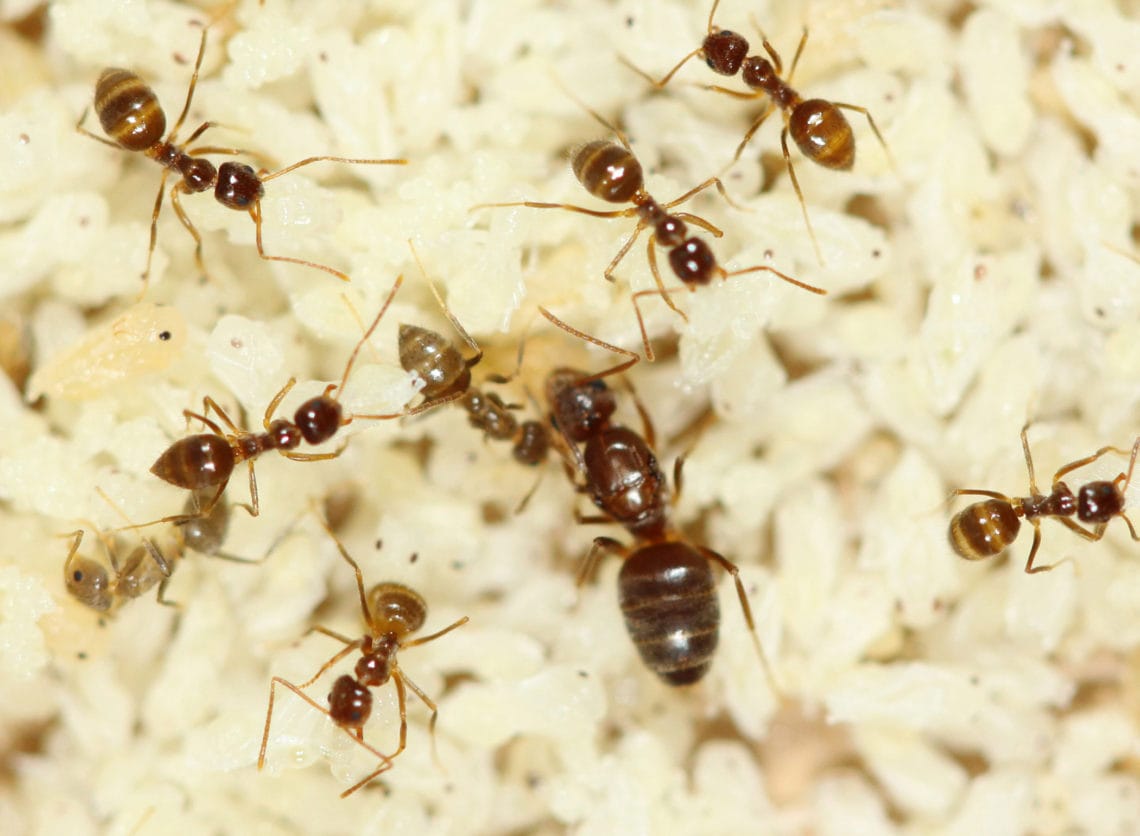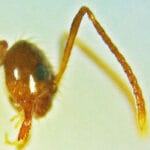If you’ve encountered a swarm of small, reddish-brown ants erratically darting around your home or yard, you might be facing an invasion of tawny crazy ants. Native to South America, these ants have rapidly spread across the Southern United States, posing a growing threat to ecosystems and human environments. This article delves into the fascinating world of tawny crazy ants, examining their biology, behavior, impact, and the ongoing efforts to manage their spread.
Tiny Invaders, Big Impact
While their name might sound amusing, tawny crazy ants (Nylanderia fulva) are anything but a laughing matter. These ants, often mistaken for fire ants, are distinguished by their reddish-brown color, uniform size (about 1/8 inch long), and characteristically erratic movements. Originally from South America, they have established a strong foothold in the southeastern United States, particularly along the Gulf Coast.
Their impact is multifaceted, affecting both natural ecosystems and human environments. Ecologically, they displace native ant populations, potentially disrupting natural food chains and delicate ecosystem balances. Economically, they are notorious for their attraction to electrical equipment, where their presence can cause short circuits, damage insulation, and lead to costly repairs for homeowners and businesses.
Why are they so difficult to control?
Traditional ant control methods often prove ineffective against tawny crazy ants due to their unique biology and behavior. Their colonies, unlike those of many other ant species, often contain numerous queens. This characteristic makes eradication incredibly challenging because as long as a single queen survives, the colony can quickly repopulate.
Adding to the control challenge, they exhibit a remarkable resistance to common pesticides. Researchers believe this resistance might stem from their high lipid (fat) content, which may bind to and neutralize pesticide molecules. Consequently, traditional baits and insecticides often fail to provide long-term control, allowing these ants to proliferate unchecked.
The Hope for Biocontrol
Amidst the challenges in controlling tawny crazy ants, a glimmer of hope emerges from an unexpected source: a naturally occurring fungal parasite. Myrmicinosporidium durum, as it’s scientifically known, has demonstrated a remarkable ability to infect and decimate tawny crazy ant populations.
This parasitic fungus disrupts the ants’ ability to process food and store energy, eventually leading to their demise. Its presence offers a promising avenue for environmentally friendly, long-term control of these invasive pests. Researchers are currently studying the mechanisms of this fungal parasite and exploring its potential for widespread application as a biocontrol agent.
Protecting Your Home
While research continues on effective large-scale control methods, homeowners can take steps to minimize the impact of tawny crazy ants around their properties:
- Inspection: Regularly inspect your property for signs of tawny crazy ant activity, particularly in moist, shaded areas where they prefer to nest.
- Treatment: Consider using baits containing insect growth regulators (IGRs) to disrupt their reproductive cycle. While contact insecticides can kill visible ants, they are unlikely to eliminate the entire colony.
- Environmental Modification: Make your property less appealing to tawny crazy ants by removing debris, trimming vegetation, and sealing cracks and crevices that provide entry points.
- Professional Pest Control: For large infestations or persistent problems, consult a qualified pest control professional. They have access to a wider range of treatment options and the expertise to target tawny crazy ants effectively.
The Future of the Invasion
The story of tawny crazy ants is still unfolding. Scientists continue to investigate their unusual biology, searching for vulnerabilities that can be exploited for effective control. The potential of the fungal parasite Myrmicinosporidium durum offers a beacon of hope for a sustainable, ecologically sound solution. In the meantime, understanding these tiny invaders is the first step toward mitigating their impact and preventing them from taking over our homes, businesses, and ecosystems.
Remember, knowledge is power! By staying informed about tawny crazy ants, their behavior, and the latest control methods, you can help protect your property and contribute to the broader effort to manage this growing threat.
FAQs About Tawny Crazy Ants
How Big Are Tawny Crazy Ants?
Don’t let their size fool you; these tiny creatures can pack a punch.
- Worker Ants: The ones you’ll see most often, are just 1/12 – 1/8 inch long (2.0-2.3 mm), about the size of a pinhead.
- Male Ants: Slightly larger than workers, clocking in at around 2.4-2.7 millimeters.
- Queen Ants: Significantly larger, often reaching a whopping 4.0 millimeters or more in length.
What is the venom of the tawny crazy ants?
Despite their bad reputation, tawny crazy ants don’t actually have venom! They don’t sting. Their defense mechanism is their strong jaws, which they use to bite. They do, however, produce formic acid. While not technically venom, this acid can irritate the skin upon contact.
Interested in learning about other fascinating creatures? Check out these articles:












